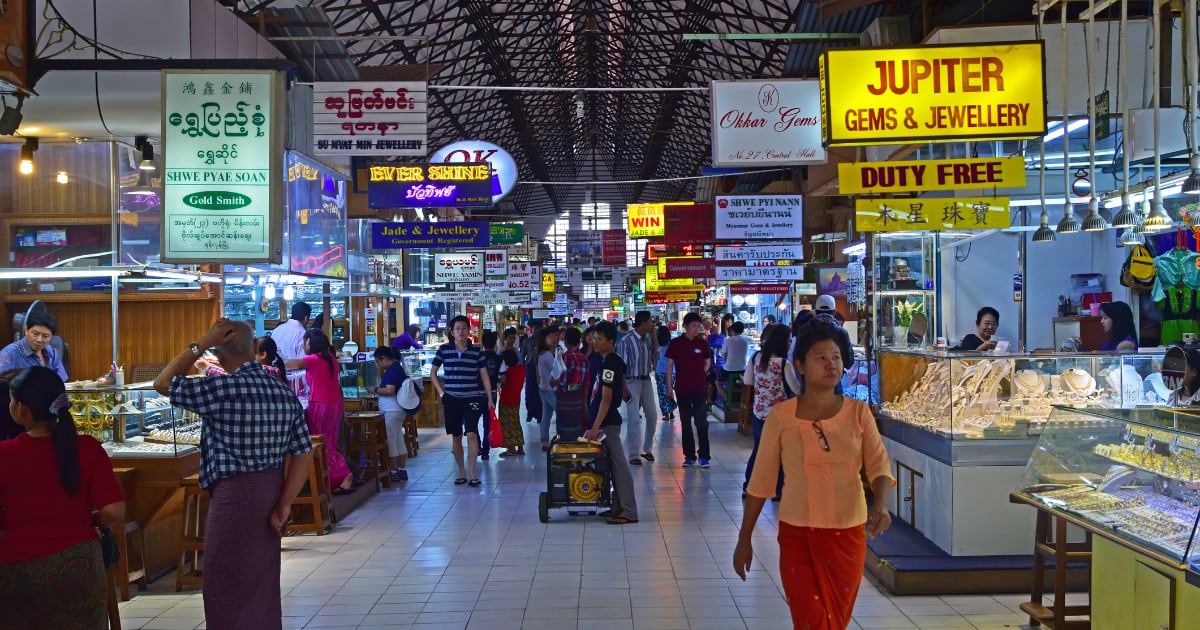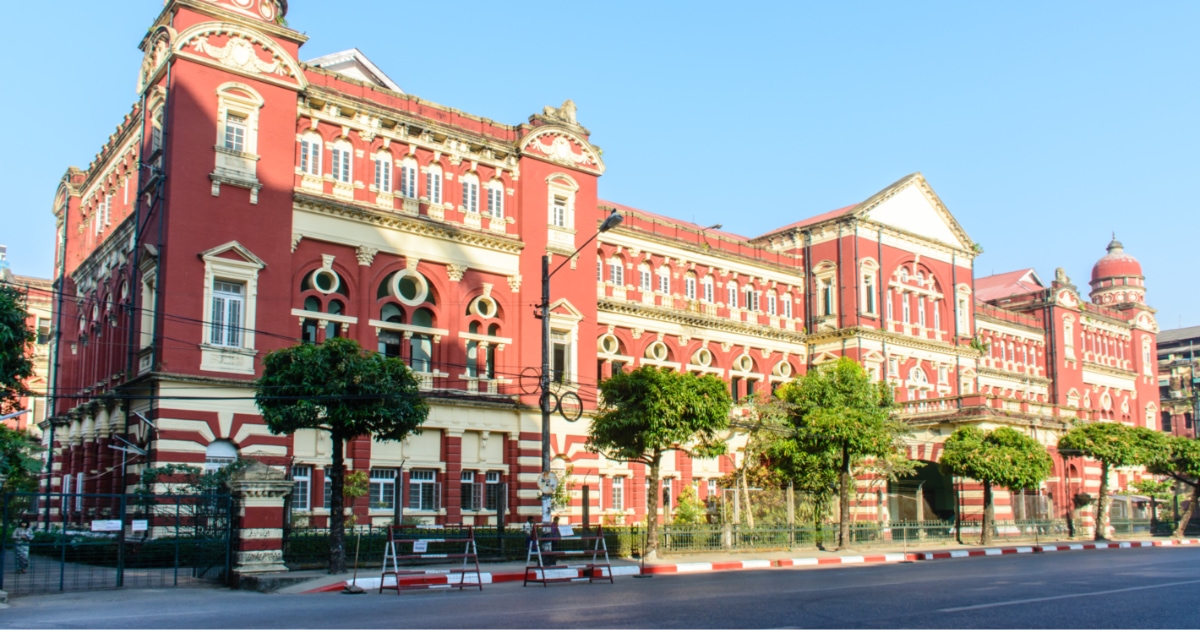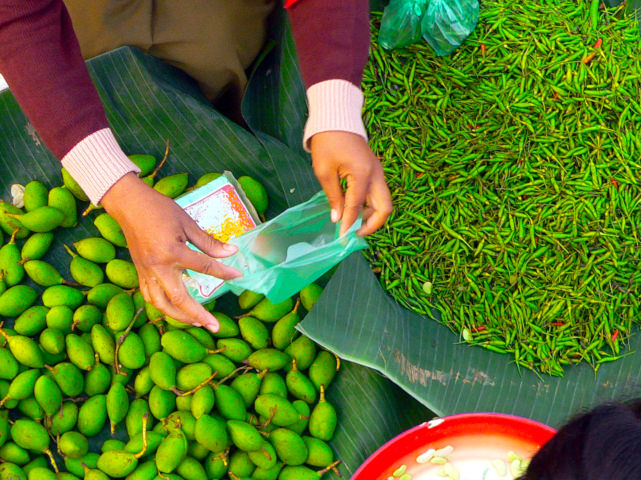Download PDF | Download word version
Introduction
On 24 December 2015 Myanmar’s parliament (the Pyidaungsu Hluttaw) passed Law No. 72 ‘An Act Amending the Myanmar Mining Law’ (2015 Mines Law). The 2015 Mines Law amends Myanmar’s outdated 1994 Mines Law. The Government first announced its intention to amend the 1994 Mines Law in 2012. The protracted delay in introducing amending legislation has contributed to a stall in foreign direct investment (FDI) in mining in Myanmar. Mining FDI was just US$6.26 million in the year ended 31 March 2015. By comparison US$3.22 billion was invested in Myanmar’s oil and gas industry over the same period.1 The amendments bring Myanmar law closer to, but not yet completely in line with, accepted international standards. In line with Myanmar parliamentary procedure the Government now has 90 days to introduce rules to implement the 2015 Mines Law (2016 Mines Rules). The 2016 Mines Rules should therefore be approved no later than 24 March 2016. A more complete analysis of Myanmar’s new mining regime will only be possible after the 2016 Mines Rules have been issued.
Foreign Participation Permitted in Mineral Trading and Processing
The 2015 Mines Law allows for foreign participation in previously restricted mining related activities namely the trading and processing of minerals. Trading is defined to include the buying, selling, transport and storage of metallic minerals. Processed ores can be exported although a general prohibition on the export of raw ore remains in place. By allowing foreign participation in trading and processing, the Government hopes to attract much needed investment into Myanmar’s under-developed ‘downstream’ mining sector.
The move will also encourage improved upstream-downstream integration. Closer relationships between producers, and purchasers as well as companies offering processing, transport and storage services will benefit the sector as a whole. The sharing of information between sector participants as well as the transfer of knowledge, skills and technology helps producers adapt to meet market demands and has been proved to lead to more effective and efficient production practices. Similarly, improved upstream-downstream linkages have been proven to reduce waste and benefit the environment.
Permit Periods
The 2015 Mines Law provides for an increase in permit periods for both large-scale and small-scale production. Large-scale production permits, available for up to 25 years under the 1994 Mines Law, are now available for up to 50 years. Small-scale production permits, available for up to 5 years under the 1994 Mines Law, are now available for up to 10 years.
No changes have been made to the term of prospecting permits which remains at 1 year. The period of exploration permits remains at 3 years and subsistence production permits 1 year (with 4 x 1 year extensions available). The permit terms for prospecting, exploration and subsistence production were originally set out in the rules implementing the 1994 Mines Law and could therefore be amended in the 2016 Mines Rules.
The 2015 Mines Law introduces a new production category of ‘Medium Level Production’ which is defined to mean medium-scale production, meaning production from a mineral deposit, which is not a large deposit and which can be carried out for moderate investment and cost or with limited technical know-how and methods.
Royalty Rates
The 2015 Mines Law maintains Myanmar’s ad valorem sales based royalty system. The 1994 Mines Law prescribed royalty rate ranges applicable to different categories of minerals. The Ministry of Mines then fixed the applicable rate per mineral within the rate-range. The 2015 Mines Law prescribes set royalty rates. The rate for certain minerals has been set at the lower end of the royalty rate range contained in the 1994 Mines Law, e.g. the rate for silver is now set at 4% rather than in the 4-5% range; iron, zinc, lead, antimony, aluminium are now set at 3% rather than in the 3-4% range. However, the rate for gold, platinum and uranium has been set at the higher end of the royalty rate range contained in the 1994 Mines Law i.e. 5% rather than in the 4-5% rate range. The royalty rate payable on gemstones has been reduced from 5-7.5% to 2%. The 2015 Mines Law allows local operators to pay tax or royalties in the form of mineral or cash. Foreign operators must continue to pay in cash. Section 18 of the 2015 Mines Law states that the royalty is to be calculated by reference to prevailing international mineral prices based on the percentage of the relevant mineral content contained in the minerals produced. As was the case under the 1994 Mines Law royalty rates do not vary with mine size.
| 1994 Mines Law | |
| Mineral | Royalty Rate Range |
| Gold, platinum uranium, and silver | 4 – 5% |
| Iron, zinc, copper, lead, tin, tungsten, nickel, antimony, aluminium | 3 -4 % |
| Gemstones and jade | 5 – 7.5% |
| Industrial minerals or stone | 1 -3 % |
| 2015 Mines Law | |
| Mineral | Royalty Rate Range |
| Industrial minerals or stone | 5% |
| Silver, copper, tungsten, nickel | 4% |
| Iron, zinc, lead, antimony, aluminium | 3% |
| Industrial minerals or gemstones | 2% |
Government Participation
Pursuant to the 1994 Mines Law the Government adopted a production sharing system. Whereby foreign mining companies were responsible for meeting 100% of project costs but required to surrender up to 30% of output to the Government under the terms of Production Sharing Agreements. The production sharing system was out of line with mining jurisdictions globally and a deterrent to international investment. Pursuant to the 2015 Mines Law the scope for Government participation has been expanded. The Government, represented by the Ministry of Mines now has three options when exercising its participatory interest in foreign invested mining projects. In addition to production sharing the 2015 Mines Law provides for equity sharing and profit sharing.
Where the Government opts to take a share of production it must share the costs of producing an Environmental Impact Assessment. Where the Government opts to take equity, the equity share is free ‘carried-interest’ equity. The investor-Government split will be based on the investment amount, the type of mineral, the size and quality of the reserve and the cost of production.
Foreign Investment Permitted in Medium and Small-scale Projects
The 1994 Mines Law, together with Myanmar’s Foreign Investment Law, restricted foreign investment to large-scale mining projects. Pursuant to Section 4(f) of the 2015 Mines Law foreign mining companies will be permitted to form joint ventures with small and medium-scale permit holders depending on the ‘quality and quantity’ of the mineral deposit in question. This amendment only applies to metals and industrial raw materials. Foreign participation in gemstone production remains prohibited. The 2015 Mines Law fails to define what is meant by the ‘quality and quantity of the mineral deposit’ but states a supporting geological report is required. Pursuant to Section 11 of the 2015 Mines Law the classification of production scale will be made taking into account operating conditions, the size of the mine area, the amount of investment required and equipment and machinery usage.
Environmental
The 2015 Mines Law contains a number of provisions relating to the obligation of foreign miners in respect of environmental protection. Pursuant to Section 13(e)(1) of the 2015 Mines Law foreign miners are obliged to establish and make annual contributions to a ‘Reserve Fund’ for environmental conservation. Pursuant to Section 13(e)(2) miners are obliged to prepare and carry out mine rehabilitation following mine closure.
Section 23 of the 2015 Mines Law amends Paragraph 26 of the 1994 Mines Law which sets out the “Duties of the Chief Inspector”. The amendment expands the duties of the Chief Inspector’s to include inspection of the systems/controls operators put in place to limit the adverse social and environmental impact of a project.
The 2015 Mines Law defines a ‘Feasibility Study’ as a study ‘on the viability of a mineral project and includes descriptions of the methods of exploration, extraction, and processing, together with a financial analysis of the project incorporating information on the planned investment and anticipated levels of commercial production, and to include an evaluation of social, and environmental factors.’
Pursuant to the 1994 Mines Law the Ministry of Mines had the authority to require the owner of a large-scale mineral production or integrated permit to produce a study to assess the feasibility of the proposed operation. It could also request that miners applying for a large-scale production permit to produce a feasibility study to support the granting of the permit. Making the production of feasibility studies an activity for which a permit is required should give the Ministry of Mines an extra element of oversight into the production of the study.
This additional clarity in the area of feasibility studies is welcome. Typically sources of finance will start to present themselves to mineral companies as they move towards the feasibility study stage. This is particularly true where a company has a proven or partially proven resource but bridging finance is needed to complete further exploration and development work and to produce a “pre” or “bankable feasibility study”.
Decentralisation
Section 6 of the 2015 Mines Law provides for the decentralisation of the application process in respect of local involvement in prospecting, exploration, production of feasibility studies, processing and trading and subsistence and small-scale production.
State and/or regional authorities are authorised to process permit applications and issue other approvals to subsistence/small-scale operators. The 1994 Mines Law restricted mining management at a local and regional level. Decentralisation initiatives often form part of a broader policy of ‘fomalisation’. It should be noted that this decentralised application process does not apply to foreign investors who should still deal directly with the Ministry of Mines. ‘Fomalisation’ is pursued by Governments seeking to improve the regulation and management of subsistence and small-scale mining in an attempt to make it a more profitable and economically beneficial sub-sector of an economy. Advocates of mining decentralisation argue that regional rather than central Government should be responsible for ensuring compliance with mining legislation, overseeing the demarcation of mining rights, revenue collection, the processing of mining rights applications, monitoring production, providing technical support to miners and combatting illegal mining. The distribution of mining revenues is often a contentious issue between regional and central authorities. In this regard, decentralisation as part of a broader policy of ‘formalisation’ could help the Myanmar Government’s peace building efforts.
Guaranteed Right to Production Permit
Pursuant to Section 11(a) of the 2015 Mines Law a mining company who undertakes prospecting, exploration and conducts a feasibility study in a permit area is entitled to receive a production permit for that area.
Offences and Penalties
The 2015 Mines Law amends a number of provisions set out in Chapter XI “Offences and Penalties” of the 1994 Mines law.
Section 24 of the 2015 Mines Law amends Paragraph 28(b) of the 1994 Mines law. Formerly a permit holder found to be in breach of the conditions of a permit could continue to operate on the payment of a fine. Pursuant to the amended provision the fine should not be less than the Performance Bank Guarantee. The Performance Bank Guarantee can be anywhere from US$50,000 – US$100,000.
The new legislation increases the maximum prison term for engaging in prospecting, exploration or processing without a permit from 7 to 10 years and a fine of up to Kyat 50 Lakh2 or approximately US$3850.3
The fine for illegal prospecting, exploring or production of gemstones has been increased from Kyats 50,000 (or approximately US$45) to between a minimum of Kyat 10 Lakhs – and maximum of Kyat 50 Lakhs (or approximately US$770 – US$3850).4 The maximum prison term is also increased from 7 to 10 years.
The penalty for illegally trading in minerals has been increased from a fine of Kyats 20,000 to Kyat 2 Lakhs (or from approximately US$20 – US$154). The maximum prison term for the offence remains at 3 years.5
The 2015 Mines Law introduces new penalties for operating without a subsistence permit. Illegal operators face prison terms of 1 – 3 months and a fine of up to Kyats 1 Lakh (or approximately US$77).6
The 1994 Mines Law did not differentiate between subsistence and large-scale operators in respect of the penalties to be imposed for operating without a licence.
Offence of trespassing on a Mineral Reserve Area is now punishable by a fine of up to Kyats 500,000 and a prison term of up to 6 months. The maximum fine for the offence under the 1994 Mines Law was Kyats 5,000.7
The maximum fine for violation of the terms and conditions of a mining permit has been increased from a maximum fine of Kyats 10,000 to a fine of between Kyat 2 – 10 Lakhs (or approximately US$154 – US$770).8 The offence is subject to a term of imprisonment of up to 1 year. Repeat offenders there is a mandatory term of imprisonment of up to 1 year.9
Conclusion
While certainly representing progress on the previous legislative regime, the 2015 Mines Law fails to deliver the legal changes desired by international mining companies. The revised royalty rates are still uncompetitive, so too is the royalty calculation method based on mineral content. Miners would prefer to see royalty payments based on net sales proceeds as this would help offset price volatility. Although the 2015 Mines Law provides a guarantee to explorers in respect of exploration permits, it otherwise fails to incentivise exploration stage companies. It remains to be seen whether or not the 2016 Mines Rules or the fiscal terms on offer in future production and joint venture agreements – such as the signature bonus and Performance Bank Guarantee – will be amended to attract foreign miners to Myanmar.
1 Source www.oxfordbusinessgroup.com
2 1 Lakh is equal to 100,000 Kyats
3 Section 26 of the 2015 Mines Law amending Paragraph 30 of the 1994 Mines Law
4 Section 26 of the 2015 Mines Law amending Paragraph 30(a) of the 1994 Mines Law
5 Section 27 of the 2015 Mines Law amending Paragraph 31 of the 1994 Mines Law which outlines the penalties for a breach of Paragraph 29 i.e. prohibition on non-permitted trading
6 Section 25(b) of the 2015 Mines Law– introducing a new Paragraph 30 (b) into the 1994 Mines Law
7 Section 31 of the 2015 Mines Law amending Paragraph 33 of the 1994 Mines Law
8 Section 29 of the 2015 Mines Law amending Paragraph 32 of the 1994 Mines Law which relates to breach of Paragraph 13 (Duties of Permit Holder)
9 Section 30 of the 2015 Mines Law – introducing a new Paragraph 32 (a) into the 1994 Mines Law
Myanmar 2015 Mines Law
Myanmar 1994 Mines law
Mining in Myanmar
An Act Amending the Myanmar Mining Law 2015 Mines Law
2015 Mines Law amends Myanmar’s outdated 1994 Mines Law
Legislation on mining in Myanmar
2016 Mines Rules
Foreign direct investment in Myanmar mining
Myanmar’s new mining regime
Attract foreign miners to Myanmar
This newsletter is for information purposes only. Its contents do not constitute legal advice and it should not be regarded as a substitute for detailed advice in individual cases.
Transmission of this information is not intended to create and receipt does not constitute a lawyer-client relationship between Charltons and the user or browser.
Charltons is not responsible for any third party content which can be accessed through the website.
If you do not wish to receive this newsletter please let us know by emailing us at unsubscribe@charltonslaw.com








